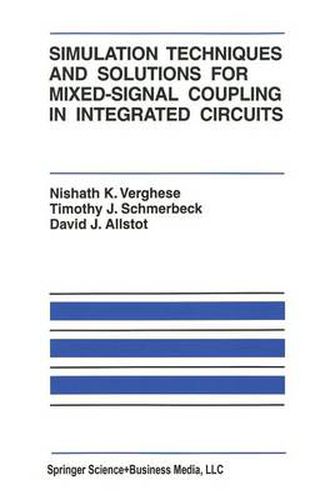Readings Newsletter
Become a Readings Member to make your shopping experience even easier.
Sign in or sign up for free!
You’re not far away from qualifying for FREE standard shipping within Australia
You’ve qualified for FREE standard shipping within Australia
The cart is loading…






This title is printed to order. This book may have been self-published. If so, we cannot guarantee the quality of the content. In the main most books will have gone through the editing process however some may not. We therefore suggest that you be aware of this before ordering this book. If in doubt check either the author or publisher’s details as we are unable to accept any returns unless they are faulty. Please contact us if you have any questions.
The goal of putting systems on a chip has been a difficult challenge that is only recently being met. Since the world is analogue , putting systems on a chip requires putting analogue interfaces on the same chip as digital processing functions. Since some processing functions are accomplished more efficiently in analog circuitry, chips with a large amount of analogue and digital circuitry are being designed. Whether a small amount of analogue circuitry is combined with varying amounts of digital circuitry or the other way around, the problem encountered in marrying analogue and digital circuitry are the same but with different scope. Some of the most prevalent problems are chip/package capacitive and inductive coupling, ringing on the RLC tuned circuits that form the chip/package power supply rails and off-chip drivers and receivers, coupling between circuits through the chip substrate bulk, and radiated emissions from the chip/package interconnects. To aggravate the problems of designers who have to deal with the complexity of mixed-signal coupling there is a lack of verification techniques to simulate the problem. This text addresses two major issues of the mixed-signal coupling problem - how to simulate it and how to overcome it. It identifies some of the problems that will be encountered, gives examples of actual hardware experiences, offers simulation techniques and suggests possible solutions. Readers of this book should come away with a clear directive to simulate their design for interactions prior to building the design, versus a build it and see mentality.
$9.00 standard shipping within Australia
FREE standard shipping within Australia for orders over $100.00
Express & International shipping calculated at checkout
This title is printed to order. This book may have been self-published. If so, we cannot guarantee the quality of the content. In the main most books will have gone through the editing process however some may not. We therefore suggest that you be aware of this before ordering this book. If in doubt check either the author or publisher’s details as we are unable to accept any returns unless they are faulty. Please contact us if you have any questions.
The goal of putting systems on a chip has been a difficult challenge that is only recently being met. Since the world is analogue , putting systems on a chip requires putting analogue interfaces on the same chip as digital processing functions. Since some processing functions are accomplished more efficiently in analog circuitry, chips with a large amount of analogue and digital circuitry are being designed. Whether a small amount of analogue circuitry is combined with varying amounts of digital circuitry or the other way around, the problem encountered in marrying analogue and digital circuitry are the same but with different scope. Some of the most prevalent problems are chip/package capacitive and inductive coupling, ringing on the RLC tuned circuits that form the chip/package power supply rails and off-chip drivers and receivers, coupling between circuits through the chip substrate bulk, and radiated emissions from the chip/package interconnects. To aggravate the problems of designers who have to deal with the complexity of mixed-signal coupling there is a lack of verification techniques to simulate the problem. This text addresses two major issues of the mixed-signal coupling problem - how to simulate it and how to overcome it. It identifies some of the problems that will be encountered, gives examples of actual hardware experiences, offers simulation techniques and suggests possible solutions. Readers of this book should come away with a clear directive to simulate their design for interactions prior to building the design, versus a build it and see mentality.